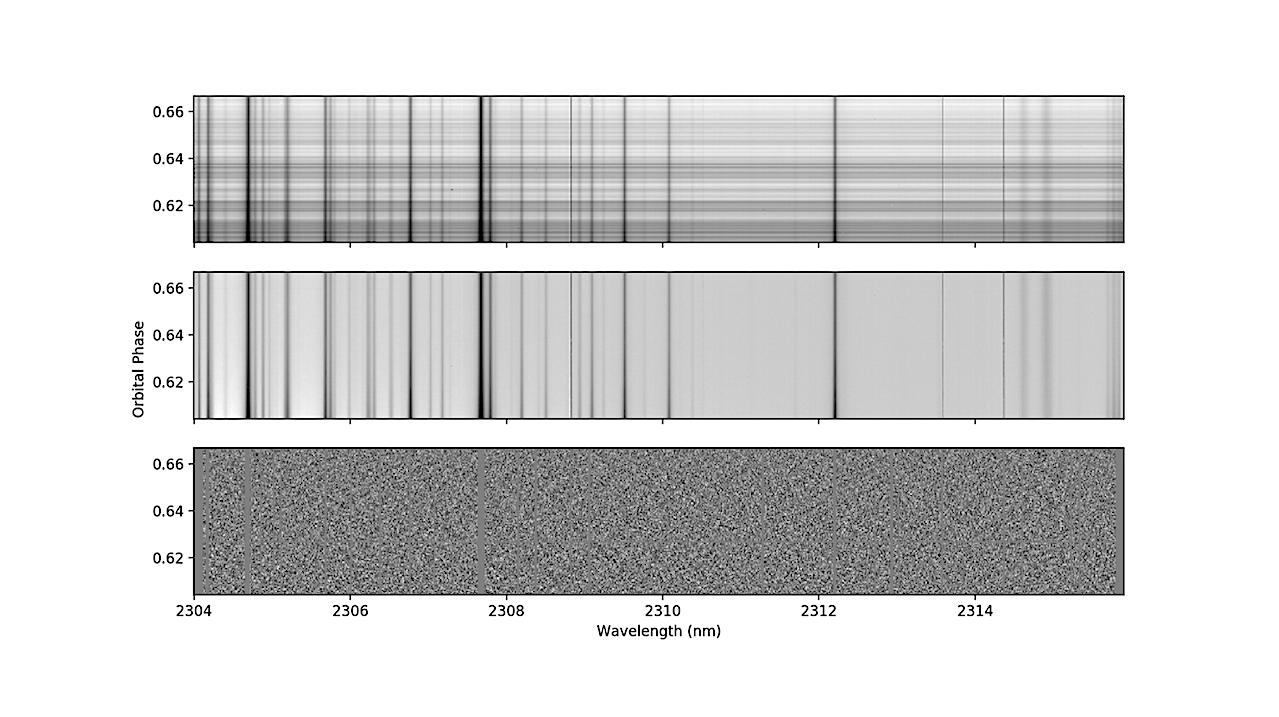Doppler Tomography As A Tool For Characterising Exoplanet Atmospheres II: An Analysis of HD 179949 b

High-resolution Doppler spectroscopy provides an avenue to study the atmosphere of both transiting and non-transiting planets. This powerful method has also yielded some of the most robust atmospheric detections to date.
Currently, high-resolution Doppler spectroscopy detects atmospheric signals by cross-correlating observed data with a model atmospheric spectrum. This technique has been successful in detecting various molecules such as H2O, CO, HCN and TiO, as well as several atomic species. Here we present an alternative method of performing high-resolution Doppler spectroscopy, using a technique known as Doppler tomography.
We present an analysis of HD 179949 b using Doppler tomography and provide Doppler tomograms confirming previous detections of CO at 2.3 microns, and H2O at both 2.3 microns, and 3.5 microns within the atmosphere of HD 179949 b, showing significantly lower background noise levels when compared to cross-correlation methods applied to the same data.
We also present a novel detection of H2O at 2.1 microns, as well as a tentative detection of CO on the night side of the planet at 2.3 microns. This represents the first observational evidence for molecular absorption in the night-side emission spectrum of an exoplanet using Doppler spectroscopy.
S. M. Matthews, C. A. Watson, E. J. W. de Mooij, T. R. Marsh, M. Brogi, S. R. Merritt, K. W. Smith, D. Steeghs
Comments: Accepted for publication in the Monthly Notices of the Royal Astronomical Society. 16 pages, 14 figures, 7 tables
Subjects: Earth and Planetary Astrophysics (astro-ph.EP); Solar and Stellar Astrophysics (astro-ph.SR)
Cite as: arXiv:2404.05652 [astro-ph.EP] (or arXiv:2404.05652v1 [astro-ph.EP] for this version)
https://doi.org/10.48550/arXiv.2404.05652
Focus to learn more
Submission history
From: Christopher Allan Watson
[v1] Mon, 8 Apr 2024 16:36:01 UTC (10,224 KB)
https://arxiv.org/abs/2404.05652
Astrobiology,








